


 251b
Reconstructing the
251b
Reconstructing the
Johannine Community IIb
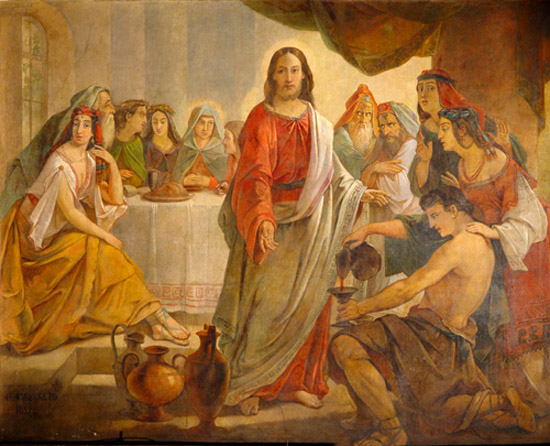
The Mystery of Cana,
Marriage & the Resurrection
Third Expanded Edition, 2 May 2024

Continued from Part 2a
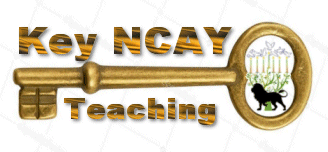
Introduction
Shabbat shalom and welcome back to the second part of Part 2 of our series, Reconstructing the Johanine Community in which we dig deep into the writings of the Apostle John to uncover forgotten, hidden truths that became lost or distorted owing to the huge ecclesiastical upheavals in the early Catholic era. The goal today is to maintain the overall perspective and not distort that by focussing on just one one of the apostle's themes that happens to be controversial which is why we are covering a number of themes simultaneously. This is inline with the instruction I was given on 13 April 2023 recorded in my ex tempore video, A New Direction for the Ministry (SM101). This reworking of the original 2000 teaching is therefore substantially different and much expanded, being now three teachings of which this is the second.
Not Gnosticism
Before we dive into today's teaching I want to say from the outset that none of these deeper Johannine truths are necessary for salvation. This material is not for new converts or beginners. Even in the darkest days of apostacy - and apostacy has been going on since the Fall of Adam and Eve - there has always been adequate saving truth available to mankind. Yahweh has never left the world in complete darkness. So you can as easily go to a Bible-believing and Bible-implementing Evangelical Church and obtain the basic message of salvation there as come to us so long as you maintain that salvation afterwards by keeping your eyes on Christ and pursue holiness all your days. And that essentially means a life of obedience to Elohim's (God's) instructions in Scripture. We are not Gnostics offering you 'secret knowledge' which alone can save you. We're not saved by knowledge (Gnosticism) but by proactive faith in a physically resurrected Person, Yah'shua the Messiah (Jesus Christ). And by 'faith' we mean, like James taught, trust that leads to actions, deeds or 'works' reflecting that faith (Jas.2:24).
Not a 'One-and-Only-True-Church'
Millions have lived before without any knowledge of what I am sharing or am about to share with you and are today in Heaven. Let's be clear about that. We don't claim to be the 'one-and-only-true-church' or 'organisation' the way the Catholics, Eastern Orthodox, Mormons, Jehovah's Witnesses, radical Calvinists, the Campbellite Churches of Christ, the conservative breakoffs of the Worldwide Church of God, some Adventists, and some others claim to be. We have never made that claim. Please always remember that. We consider ourselves part of the wider Body of Christ, not its exclusive representatives. Even if Yahweh had never called NCAY into existence, the simple, authentic saving message would still be going out into the world by means of others, the one that Peter and Paul were agreed on and received independently of one another.
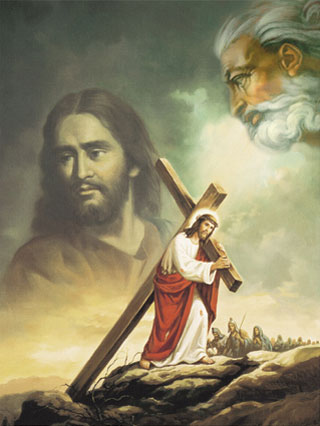 The basic truths of salvation have always been available to all
The basic truths of salvation have always been available to all
The Deeper Truths are for the Maturing of the Believing Remnant
To be clear, what I am called to share with those who have responded to the call to hear this message is for the express purpose of equipping the endtime Remnant - what's left of the original 144,000 heads of families foreknown by Yahweh since the beginning who must be prepared to join with those of the 144,000 in Heaven who have gone before us and who will be returning with Christ along with the New Jerusalem. These teachings are only for those who belong to the faithful community known as the priestly Assembly (Church) of the Firstborn or Charvurat Bekorot whose names are written in Heaven (Heb.12:23) who are the inhabitants of the Holy City, the New Jerusalem. These are are the men, with their wives, who have remained true, who will be called to serve in it during the Millennium. They will also be sent out from the Holy City to be rulers of the nations.
A New Covenant Melchizedek Priesthood School & Action Community!
Our target audience in this series is therefore a small one - the 100 per cent-committed to the King and the Kingdom. The rest will not believe, let alone implement, many if not most of these truths until they hear it from the mouth of the Saviour themselves but that won't be until after the Millennium, when the vast body of believers are finally resurrected. So you don't have to 'belong' to any 'church' or 'denomination' to be saved but you do need in be in one of the 12 gathering points to be a part of the Remnant Exodus and you do need generally-speaking a congregation to serve in and be nourished by in order to be spiritually grown and matured. To be a part of the Firstborn, which is a community and not scattered individuals here and there, you need the fellowship of the Firstborn because these elect ones do not act alone or independently of each other but as a united echad body who are of "one accord" (Ac.1:14; 2:1,46; 4:24; 5:12; 15:25; Phil.2:2, KJV) they have one mind, one heart, one spirit and a single shared, messianic community labour. The hyper-individualistic are not a part of these. This group of assemblies and individuals exists not only to bring unbelievers to Christ (like Evangelicals), they exist not only to teach them ways of Messianic Israel like messianics, but also - and specifically - they exist to mature and unify the called, dedicated, responsibility-embracing and hard-working 'Remnanteers' for the difficult Kingdom tasks that lie ahead of them which they need one another for. I guess you could also call this group of congregants a 'New Covenant Melchizedek School and Action Committee for the Final Gathering' for want of a better label!
Parts of the Body in Different Stages of Development
So I repeat, you don't have to be a part of this work to be saved or learn the Torah way. You can be an Evangelical (Baptist, Pentecostal, Methodist, Anglican, Lutheran, etc.) or Messianic (Jewish, Israelite) to accomplish that. I just want to make sure my listeners and readers understand that. And there may well be others who teach some of the deeper truths as we do that we know nothing about. They're all 'Body of Christ' even if they may be at different stages of development and spiritual maturity. We're all works in progress. We ourselves are only looking for those whom Yahweh has called to be a part of us. We're out to convert everyone to Christ, of course, but only to gather together into a 'church' the Remnant of the true and faithful. If He has called you to be elsewhere, be where He calls you to go, because that is where you can best be matured and at a pace that you can cope with, with content you can digest in season with the appropriate boundaries to ensure the elements of your unbelief and disobedience can be properly disciplined and maintained. If you want to understand our philosophy on this better and how become a part of us concretely, please see our article, Advice for Seekers after Truth.
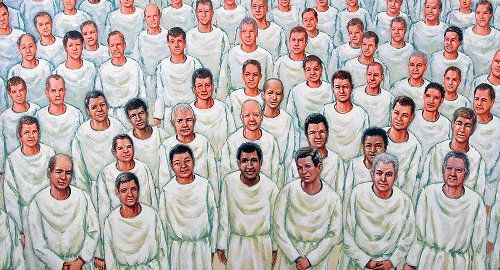 The 144,000 are the all-trusting, all-faithful Remnant
The 144,000 are the all-trusting, all-faithful Remnant
Fleshing Out the Earlier Teachings
Last week I introduced you to the Johannine idea of the sacred feminine without going into any detail. I was at pains to point out that this has nothing whatsover to do with occultic mother-goddess worship, and forewarned that what I would share with you over the following two weeks things that would upset a lot of traditional doctrinal applecarts. Today's message is the milky, first part of that orientation. The really, really tough material I am going to leave until next week because you need to be carefully prepared for that first. Though I first began dropping hints about these teachings 25 years ago, it is now necessary to flesh them out or add meat to the bones of some of those earlier teachings. This is because the Last Exodus can't properly get underway until this is done. As we begin issuing the call to the Remnant for the Final Gathering to the 12 end-time Cities of Refuge, one for each of the returning 12 Tribes of Messianic Israel, the importance of these restored truths will become the more apparent because there cannot be dissent from from any single precept of the New Jerusalem for this to happen. Part 2, then, was originally a single teaching but, as I have said, it has been sub-divided into three parts owing to all the new material that has been added to this current 2024 edition. And more will be coming later.
Apostles Old and New
Last week we also talked more about the Inner Circle of the three leading apostles - Peter, James and John - known by us as the 'Presiding Patriarchate' as they were the early Messianic Community's (Church's) 'elders' or 'fathers'. "Even though you have ten thousand guardians in Christ, you do not have many fathers, for in Messiah Yah'shua (Christ Jesus) I became your father through the gospel," said Paul to the Corinthians (1 Cor.4:15, NIV). He was refering to the 12 apostles to which he was uniquely added last of all (succeeding Judas and his temporary replacemant, Matthias) as the first and only apostle not to have personally walked with Christ in the flesh. I mention him because Paul is a type of the 12 endtime apostles that will lead the 12 cities of refuge in the Final Gathering as heads of each of the gathered 12 tribes of Messianic Israel since none of these apostles will obviously ever have known the mortal Messiah.
Like the Apostle Paul
They will rather be like Paul coming in 'at the end'. These will be known by their exact duplication of the giftings of the first apostles - all of them. Whether these 12 apostles will remain as apostles when Christ and the original 12 return, or whether their calling will only be temporary, is at present unknown. If they do remain as apostles then the first 12 apostles will have the pre-eminence. My own belief, which I expressed to you last week, is that they will together form a new Quotum of 24 Apostles in reflection of the 24 Elders that stand continuously before the Throne of Yahweh-Elohim. Another difference between these latter 12 and the original 12 is that their apostleship will be combined with their additional end-time rôle as 12 nevi'im (prophets) like Moses as they will be leading the Last Exodus from 12 separate locations around the world and not just one (Egypt) as Moses did though at the very end of Messianic Israel's 'last exodus' they will converge and merge as one 12-Tribed Nation of Israel under the leadership of Joseph-Ephraim. This will happen when they finally reach the Promised Land ahead of the arrival of the New Jerusalem coming down out of heaven. This, then, will be the 'party' or 'welcoming committee' that will meet the Saviour and the rest of the 144,000 in the air. As such, then, they have a very important appointment to keep. They must be in place in the Holy Land at the moment of the Second Coming.
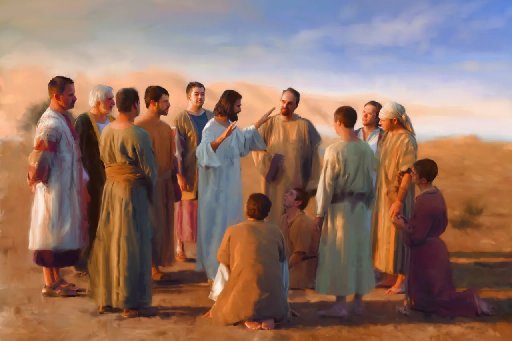 The original 12 apostles, barring Paul, walked with Christ in the flesh
The original 12 apostles, barring Paul, walked with Christ in the flesh
Paradoxes, Radio Beacons & Divided Love Tokens
We also talked about three apparent 'paradoxes' in Scripture last week and how to properly understand them. I used by way of an analogy the way spies in the Second World War used radio transmitters on enemy territory and how they were tracked down by means of two or more radio signal-detection vans at different locations. By tracing two different transmission beams back to the point where they intersected you could locate the secret transmitter and capture the enemy agents. This is similar to what we are doing with apparent paradoxes in Scripture which have to be traced back to their intersection point to learn of the truth that is being concealed. Another analogy might be some token that two lovers divide, each keeping their own half in the days of their separation, until they can reunite. Each has half the picture or wording on the original token, neither of which can be properly understood until they are joined together again. You will be introduced to more of these 'paradoxes' or 'divided tokens' particularly as we look more deeply into the mystery of the marriage at Cana next week. One of these 'paradoxes' that we need to properly understand is how the Bride of Christ can be both 'one and many'. We ended last week's teaching by comparing the beginning of John's Gospel and the beginning of his first epistle with the beginning of the Book of Genesis and that's where I would like to pick up the thread again now.
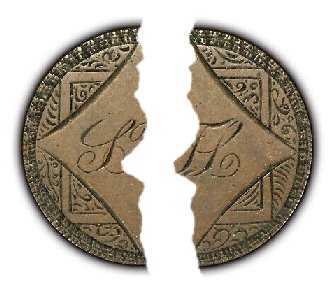 The two halves of a love-token
The two halves of a love-token
Two Creation Passages - Cosmic & Local
Nothing is juxtaposed (placed side by side with other things) arbitrarily by John. In the Johannine writings, the location of a passage is as important as its content for the boundary between two seemingly unrelated events or theological points is the locus or point of the actual revelation. Thus the Creation of the World by the Eternal Davar (Word) (Jn.1:1-18) is set in contrast with the Wedding at Cana (Jn.2:1-11) so that we can see some more detail. True, there is a lot of material sandwiched in between these (namely, John 1:19-50). And whilst this 'sandwich filler' (imagine some fish paste between two slices of bread) is the bridge between the two pieces of revelation, it is mostly exoteric or other padding or 'filler' - important, of course, for the basic Gospel message (i.e. it's not just 'word salad') but it has nothing per se to do with the deeper matters that John wants us to get our attention on. There are two creation passages - the one cosmic (the creation of the Universe - Genesis 1:1 - and the re-formation of the earth - Genesis 1:2ff.), and the other local (Cana, where wine is supernaturally created out of water) but they are inextricably linked like a golden thread running between them; and so they illuminate each another like the two ends of a wire connected to a light bulb empowered by the Ruach haQodesh (Holy Spirit). If you want to understand the basic mechanics of creation you will find the answers in these two passages.
The Difference Between Water and Wine
You see, the supernatural changing of water into wine is not simply a miracle to prove Yah'shua (Jesus) was the Messiah (though it was absolutely and importantly that too) - it is also a teaching device for the elect endtime Remnant to by which they are enabled to understand some deeper matters. Miracles that are recorded by the Gospel writers were not given arbitrarily by the Father or just for themselves, a reason why not all of them are repeatable. You see, the point isn't primarily about water being turned into wine but what these two liquids symbolise: one is made of simple water molecules only and the other of 86% water, 12% ethanol (if its not 'new wine' or simple grape juice), glycerol and more complex alcohols, 1% polysaccaharides, 0.4% organic acids, 0.1% polyphenols such as anthocyanin and tannins, minerals, volatile compounds, and 0.5% other compounds.
Understanding the Divine Chemistry
My point in contrasting water and wine in this way is to show you that that there is a huge difference between the water of the baby Gospel and the 'wine' of the mature Gospel even if by volume the wine is 86% the same as the baby Gospel, i.e. water! The difference is in the content. Yahweh has a higher purpose for the guests at this wedding, more than merely providing for a shortage of wine even though He is kind and considerate like that, since everything matters to Him, including the ordinary, mundane, physical details of ordinary life. He notices hairs on the head and sparrows in the air too. In a word, firstborn truth is complex and intricate, just like grapejuice or wine. Now for a Biochemist like myself, I can appreciate the symbolism scientifically. You see, wine comes from that which was once alive - the fruit (grapes) of a vine tree - and that vine, both John and Paul say, is Christ Himself. That's why we must spiritually-speaking 'drink His blood' (Jn.6:53,55; 1 Cor.11:25) as opposed to the literal drinking of blood which is something only the wicked do (e.g. Rev.16:6). There are many reasons Yahweh forbids us to eat or drink blood in the Torah (e.g. Lev.7:26). You'll see how all this connects in practice later. We partake 'literally' of the body and blood of Christ in quite a different 'way' through being grafted as branches into the Vine that is Messiah. This is a very deep mystery indeed:
"I am the vine; you are the branches. If a man remains in Mand I in him, he will bear much fruit; apart from Mee you can do nothing. If anyone does not remain in Me, he is like a branch that is thrown away and withers; such branches are picked up, thrown into the fire and burned. If you remain in Me and My words remain in you, ask whatever you wish, and it will be given you. This is to my Father's glory, that you bear much fruit, showing yourselves to be My talmidim (disciples)" (John 15:5-8, NIV).
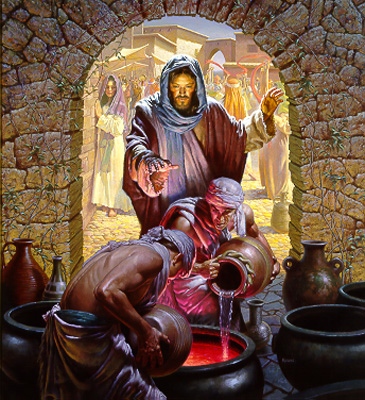 The water-to-wine miracle serves a higher purpose
The water-to-wine miracle serves a higher purpose
Choosing to Remain in Christ to Remain Saved
This is the total opposite of the 'Once Saved, Always Saved' doctrinal lie which millions of Christians believe because the truth requires active, conscious 'remaining', not passive trusting based on a single choice we made in the past at our moment of conversion. The lie does not. The Liar tells us that Elohim (God) will do all the 'remaining' for us and by this means they twist the doctrine of eternal security. (Oh Calvin, oh Reuben, what have you done?! You did not listen to Joseph! Instead you mocked him, thought of killing him and then sold him down the line into slavery!) Our security is in believing in Messiah and remaining in Messiah - daily choosing to remain in Him - because we can absolutely choose not to, and do when we rebell. The Johannine writings, which include the Book of Revelation, totally decimate all false doctrine. And that's a reason why they are vitally important. It's why Yahweh told me to immerse myself in them right at the beginning of my walk with Him - see Johannine Essays.
Cheap Grace and False Legalism
You see, you can't preserve something as complex and organic as wine without divine remaining. Likewise, a marriage cannot be eternal unless husband and wife choose to remain together in Christ. More dots connected, more pieces of the jigsaw puzzle joined... All authentic marriage is a continuation on earth of what once was. Thus there is a link between pre-existence and foreordination. But that's really deep stuff for another time! Has Satan set up a counterfeit of this? Of course. He always counterfeits everything godly. It's his trade and his calling card. The counterfeit is called Mormonism with its false priesthood and legalistic system of works-based salvation and its promise of eternal mariage which it alone claims to be able to mediate. Not so. Instead of teaching, 'remain in Christ' it teaches, 'come to us because we have the sealing power to make things eternal.' They don't. It's the same false system as Catholicism. That's why I keep warning people to be wary of those who claim to be able to impart 'things' by the laying on of hands (like the Mormons and Catholics do) or (in the case of charismatics) by 'pushing' people over to allegedly 'slay' them 'in the Spirit'. Oh, they're 'slain' by a spirit alright, but it isn't holy. It is demonic. These systems are just different mixtures of 'cheap grace' and 'false legalism' that require little or no actual spiritual overcoming the way John explains in the Book of Revelation. Am I making sense?
The Miracle at Cana Was Exclusively 'Johannine' - Why?
So we must ask ourselves this question because we're now in a position to confidently answer it: why is the marriage at Cana mentioned only by John? We know why John has left out many incidents in the life of Christ but what is the unique content in the Gospel of John for? It's not as though the different Gospels are competing rivals for our attention - it's not as though one Gospel writer is saying, 'Look, come and read my account because the others don't include this or that.' Surely the other three evangelists - Matthew, Mark ('Peter') and Luke - must have known about so important a miracle - Yah'shua's (Jesus') first public one, in fact. How then could the Synoptists have omitted it? The answer must of course stem from the understanding that each Gospel was a divine self-contained project with key historical and deoctrinal building blocks whose assembly was inspired by the Ruach haQodesh (Holy Spirit) for a particular prophetic task with one task being very detailed (Luke) and other possessing the barest minimum of material - short and pithy for those with short attention spans with a love of the dramatic and heroid like the Romans (Mark). Each Gospel has what it has because it is divinely tailored to purpose. The Gospel writers aren't advertising themselves like competing salesmen selling their wares claiming their's is the 'better deal' because it has the 'most stories'. Theirs is a cooperative effort each with different target audiences in mind, rather like the movie, The Sound of Music which had two versions, one for an American audience (starring Mary Martin) and another for a British one (starring Julie Andrews).
The Secular Explanations for Alleged 'Omissions' and 'Additions'
It is assumed by most liberal and not a few conservative scholars that the Gospel writers composed their gospels entirely independently of one another whilst acknowldging they borrowed from a common source which they call "Q" or Quelle (German for 'source'). Some even say that the Gospel of Thomas was the first real 'Gospel' and the authentic source of Yah'shua's (Jesus') sayings but we know it has been heavily tampered with, and added to, by Gnostics. It's really not a 'Gospel' but a collection of sayings of Yah'shua (Jesus), some authentic, some not. Yet clearly some sort of "borrowing" or "sharing" of material has taken place between the Gospel writers. They must have had some sort of contact with one another - Matthew (Mattias) was an apostle like John(Yochanan), and Luke was the physician-companion of Paul (Sha'ul). Only Mark is the real mystery, although he is essentially the mouthpiece for Peter (Kefa) and we could with some justification call his composition the 'Gospel of Peter'' as opposed to the apocryphal counterfeit known as the 'Apocalypse of Peter' written in the second century, long after the apostle Peter had been martyred. Mark is essentially Peter's biographer. So we are not sure who Mark is. Even he is surrounded by mystery, his Gospel abruptly ending at Mark 16:8 and containing a later, truncated resurrection account (vv.9-20) which appears to be an exoteric (outer) version of a more detailed counterpart. As you know, there are three different endings to Mark. As I explain elsewhere, I believe he was originally talking about the Master's Sukkot Meal.
 The three different sacred meals recorded in the New Testament
The three different sacred meals recorded in the New Testament
Hints of a Lost Text
That that it is a possible scenario is made more likely by the fact that at least one other part of his writing was removed from the public version of his Gospel. The 'fuller account', which had somehow 'leaked' to the public and had been sequestered by an heretical Gnostic sect called the Carpocratians who totally twisted the text to justify immorality, was ordered suppressed (with good reason) by Clement. I'll reproduce the Gnosticised version of the text in a moment to help you better understand why the last portion of Mark was removed and the other endings written by one or more unknown believers to round Marks's Gospel off - the New Revised Standard Version (NRSV) helpfully contains two of these alternative endings. Most modern versions, both conservative and liberal, add a footnote explaining the problems with all material after Mark 16:8. The Pentecostals worldwide and snake-handling cults of the American south are very dependent on the longer non-Marcan ending to justify their claimed giftings (Mk.16:17-18)
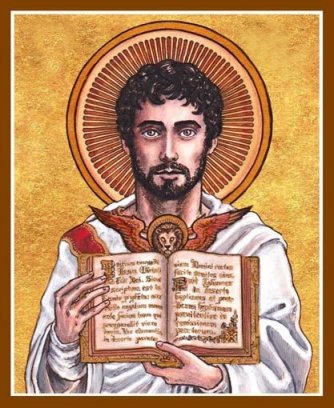 The Gospel of Mark has three different endings
The Gospel of Mark has three different endings
A Gnostic Corruption of the Missing Original of Mark 16:9ff.
We'll now take a quick look at the Carpocratian ending that was not written by a believer but by a Gnostic so you can perhaps get some insights from the forger as to what the original ending may have looked something like:
"And they came into Bethany, and a certain woman, whose brother had died, was there. And, coming, she prostrated herself before Jesus (Yah'shua) and says to Him, 'Son of David, have mercy on me.' But the talmidim (disciples) rebuked her. And Jesus (Yah'shua), being angered, went off with her into the garden where the tomb was, and straightway a great cry was heard from the tomb. And going near, Jesus (Yah'shua) rolled away the stone from the door of the tomb. And straightway, going in where the youth was, he stretched forth his hand and raised him, seizing his hand. But the youth, looking upon him, loved him and began to beseech him that he might be with Him. And going out of the tomb they came into the house of the youth, for he was rich. And after six days, Jesus (Yah'shua) told him what to do and in the evening the youth comes to Him, wearing a linen cloth over {his} naked {body}. And he remained with Him that night, for Jesus (Yah'shua) taught him the mystery of the kingdom of God (Elohim). And thence arising He returned to the other side of the Jordan" (M.Smith, The Secret Gospel, London, 1974, pp.16ff).
Was Mark Ordered by the Patriarchate to Remove the Ending of His Gospel?
How accurate this fragment is is hard to tell. It's certainly a very garbled mixture of different incidents from the life of Christ all out of sequence. The Gnostic smell is quite obvious and repulsive. Don't go giving too much credence to it. What it does establish is that there was an inner or esoteric tradition of some sort which Yah'shua (Jesus) taught (amongst others) to Lazarus in private that involved a 'young man', likely Lazarus himself. We will see the high profile that Lazarus has in the Johannine Gospel but not in the Synoptics. Clement acknowledges in his writings that there is an authentic secret Gospel of Mark. The passage above is, of course, a twisted version of the raising of Lazarus as found in John's account (Jn.11:1-54) though it lacks certain details and appears to be second-hand. As Mark was not one of the well-known talmidim (disciples) of Yah'shua he must have obtained it from John or one of the others of the Twelve. I suspect what happened was that Mark wrote about matters which were not intended to be public and was later instructed by the Patriarchate (Peter, James and John) to remove the account from his Gospel. Remember, Mark's Gospel was very likely the first to be written. Gnostics then seized on their chance to insert a bit of their false gospel which was counter-remedied by believers much later with some different endings summing up basic truths already known from the other Gospels so that Mark's story would have a proper ending.
He Fled Naked
But Mark did not excise everything that points to a special rôle played by Lazarus. In his Gospel, you may remember, he includes a mysterious episode at the arrest of Yah'shua in Gethsemane:
"A young man, wearing nothing but a linen garment, was following Yah'shua (Jesus). When they {the temple guards} seized him, he fled naked, leaving his garment behind" (Mk.14:51-52).
There is much I could say about this for in it is another clue. The modern carnally-minded 'Carpocratian' will interpret this as only cultists know how but those who know anything about the Priesthood and the way they dressed will find in this passage a key to Yah'shua's (Jesus') private instruction of Lazarus in the fragment from the Secret Gospel of Mark. More of this another time, though. There was a time I used to believe the young man was John because John is the only character in the Gospel story ever specifically identified as being 'young'. I had assumed that Lazarus must have been an older man and so my reasoning was, 'this young man couldn't have been him', but the evidence now points to Lazarus being the youthful brother of Mary and Martha, and not an older, senior-in-years brother as I had once imagined him to be. Why did I suppose that? Because I supposed Lazarus had died an older man as older people are more susceptible to disease than younger ones! But we're not told his cause of death let alone his age. Do you see what I mean about the way our assumptions colour the way we read Scripture? We are constantly arriving at interpretations based on what we know or think we know.
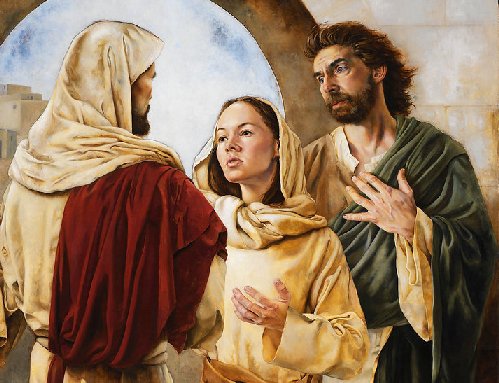 I had assumed Lazarus (right) was an older man
I had assumed Lazarus (right) was an older man
An Ancient Johannine Tradition
Let us return to the Johannine text of which C.H.Dodd, the eminent theologian, said:
"Behind the Fourth Gospel lies an ancient tradition independent of the other Gospels" (Historical Tradition in the Fourth Gospel, Cambridge 1963, p.423).
Now we can go to the wedding at Cana.
The Original Order of the New Testament Books According to Aramaic-Speakers
Though John's Gospel of the four gospels was almost certainly written last it undoubtedly contains information which either the Synoptists had no access to or did not feel it would illustrate their particular story and so omitted it. The other two members of the Inner Circle, James and Peter, we're told, never wrote Gospels though we now know Peter's testimony was shadow written for him by his biographer, Mark. That is why I regard Mark as being of the uttmost importance as it's essentially Peter's memoirs. The writings of the Inner Circle, who were privy to things the other apostles were not, must therefore take priority over the writings of the other apostles and that is why in the Aramaic New Testament or Peshitta the order of books is different from our essentially Roman one. Let's take a look at that ordering now, something I asked you to research last week:
- 1. Gospel of Matthew
- 2. Gospel of Mark (≡ I Peter)
- 3. Gospel of Luke (I Luke)
- 4. Gospel of John (I John)
- 5. Acts (II Luke)
- 6. James
- 7. 1 & 2 Peter (II-III Peter)
- 8. 1, 2 & 3 John (II-IV John)
- 9. Jude (Judah)
- 10. The 13 known Pauline Writings (Romans to Philemon = I-XIII Paul)
- 11. Hebrews (Pauline - XIV Paul?) [1]
- 12. Revelation (V John)
Why a Different New Testament Order in the Aramaic Tradition?
Please carefully note that the letters/epistles of the Inner Circle (Peter, James and John) are deliberately placed ahead of Paul's own letters/epistles because they were regarded as possessing a higher authority. Why? Because they knew the mortal Messiah, Paul did not. They were taught by the mortal Messiah viva voce - by word of mouth using their ears, and by observation using their eyes and sensing with their spirits, every day for three years. Paul was not. What Paul the theologian obtained was by direct revelation and by thinking things through based on his extensive knowledge of the Tanakh (Old Testament). Moreover, he was trained by the Ruach (Spirit) to be an apostle solely, it would seem, for the benefit of the Gentiles unschooled in the Torah. The Roman Church, which was a Gentile institution, then reshuffled the order of the New Testament books because it wished to assign a new, different authority to Paul whose message was to the gentiles, something Paul would have been appalled by, for he always had the humility to regard himself as "the least [in rank] of the [12] apostles" (1 Cor.15:9) because of his shameful rôle as a former persecutor of believers. Inevitably, if the shorter epistles of Peter, James and John are strung on to the end of Paul's writings, then simply by their positioning they will come to be dwarfed when in fact they had been deliberately demoted. You only have to recall that Martin Luther wanted to get rid of James' 'Straw Epistle' (as he contemptuously called it), 2 Peter and even the Book of Revelation. Do you see something wrong here - a flaw in Luther's discernment? Yeh Yahweh used this German East Manassehite to do a might work of reformation for Him!
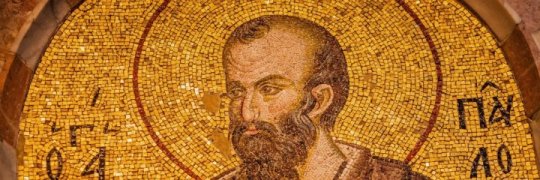 Paul received his material in an entirely different way to the other New testament writers
Paul received his material in an entirely different way to the other New testament writers
James Before Peter and John
Now you may wonder why James, who was #2 in the Inner Circle, appears before Peter and John in the Aramaic ordering. That was because of the high respect accorded him by the Aramaic-speaking Messianic Community as the half-brother of Yah'shua (Jesus). So in the Aramaic tradition, James' epistle is set right after Acts. Thus to know what the mystical, esoteric tradition of the early Messianic Community (Church) was, we are compelled to turn to Peter, James and John, but mostly to John who was the final apostolic witness, a reason his Book of Revelation appears as the last book of the New Testament as a kind of final 'seal'. Matthew, Mark and Luke knew nothing of many of Yah'shua's (Jesus') deeper teachings. So neither of the two arrangements are chronological. If they had been, 3 John would have appeared at the very end as the last book of the Bible.
THE MYSTERY OF THE WEDDING AT CANA - Part A
A Major Social Event
Let's return to the main theme of Part 2 of this series and make tracks for the little village Cana in Galilee and a mysterious wedding. Here, in the first account of Yah'shua's (Jesus') public ministry, we shall find the most important clues to the whole Johannine tradition. It's an absolute spiritual treasure trove, a veritable vein of gold ore that I have been mining more or less continually for decades. And it never seems to run out. It is, moreover, a very strangely worded account and leaves many unanswered questions. To begin with, this is not a Western wedding which is usually all over in a day. Israelite weddings last a whole week during which time the guests had to be 'wined and dined'. The wedding feast was therefore very important indeed. To fail to show proper hospitality was regarded as a serious social offense so when the wine ran out this was more than a minor social embarrassment. The host family had an obligation to provide a feast of the required standard irrespective of how poor they were. Because the range of beverages was limited, the people mostly drank either wine or water.



The Emergency & the Deity of Messiah Revealed
When the wine ran out Mary, the mother of Yah'shua (Jesus) who was the hostess, was in a panic, and turned to her son for help. Then the miracle followed, which for John was one of the many 'signs' of, or 'clues' to, Yah'shua's (Jesus') messiahship and deity because he was always more interested in the significance of actions or the 'bigger picture' than he was in the actions themselves because the actions revealed his Master's glory (Jn.4:54; 6:14; 9:16; 11:47; 1:14, cp. Is.35:1-2; Joel 3:18; Amos 9:13). In other words, as one expert on John's Gospel, C.K.Barrett wrote, "the deeds and words of Jesus (Yah'shua) are the deeds and words of God (Elohim); [and] if this be not true the book [of John] is blasphemous" [2]. Quite so, and this is important to remember, something that those messianics - and Arians like the Jehovah's Witnesses who deny the deity of Messiah - need to take note of. For John the external actions are merely pointers to the real reason the miracle was done, to prepare the world for the amazing truth that Yah'shua (Jesus) was Elohim-in-the-flesh...God incarnate, something the Judahites (Jews) of that time were expecting of their anticipated Messiah as the paraphrase, commentary or targum of Isaiah demonstrates conclusively. Only later, after they had rejected Yah'shua (Jesus), did they insist either that the Messiah was a mere man or collective Israel itself, i.e. they themselves! In addition to the miracles themselves, the text is peppered with esoteric (inner) clues as to what John is hinting at at ever deeper levels of truth...for those with the eyes to see and with the keeness to know more of the ways of Elohim (God). We're going to take a look at them one by one.
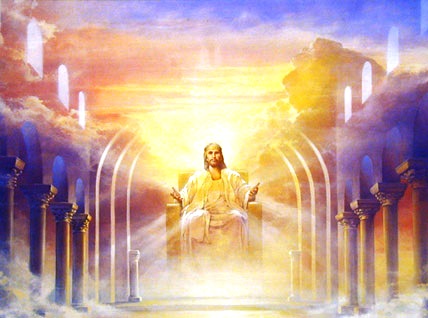 Showing Yah'shua is Elohim, the main reason for the the signs
Showing Yah'shua is Elohim, the main reason for the the signs
A Pointer to the Resurrection-to-Come
The marriage at Cana is not, strictly speaking, a public event, but semi-public (Jn.2:9) even though it quite possibly involved the whole of the little village of Cana and people from neighbouring settlements. It is a wedding to which only selected guests are invited to witness a consecration. In it Yah'shua (Jesus) not only gave the first of His signs but also "manifested His glory" (Jn.2:11, NASB). As the first of His known miracles it must therefore be directly compared with the last of His miracles because of the chiastic way esoteric or inner truths are arranged in Hebrew story-telling. The last great miracle before His arrest was the raising of Lazarus and as we read that, we are supposed to reflect back on the first miracle that took place at Cana and to look forward to Yah'shua's (Jesus') own raising to which both events were pointing and anticipating. On the primary level, this is all about the physical resurrection of the dead.
The Connection Between Marriage and Resurrection
Here, then, are juxtaposed the two 'pillars' of His ministry, the alef and taw, or alpha and omega, the Beginning and End, the 'A' and the 'Z' of His works, which are intended to illuminate one another, works that took place, respectively, at Cana and Bethany-beyond-the-Jordan. There is therefore supposed to be a direct link between marriage (Cana) (which transforms the two being joined together like plain water being turned to rich wine) and the resurrection which saw the raising of Lazarus from the dead (Bethany). This is deliberate juxtapositioning. Different things are being linked together. New relationships are being shown us. Marriage and resurrection are connected but you'll not see this relationship if you only look at Scripture superficially. Ultimately they are pointing to both eternal marriage and the Mystical Marriage of Messiah that describes the saved and glorified as an allegorical Bride of Christ. What is revealed in the Book of Revelation, John's last or Omega testimony, is being anticipated in his Gospel, his first or Alpha testimony, the Gospel of John. The Gospel starts with a marriage and the Book of Revelation ends with a marriage.
 John's Gospel begins with a marriage at Cana and his
John's Gospel begins with a marriage at Cana and his
Book of Revelation ends with a marriage in Heaven
A Deep Mystery at Cana Unfolds
One could write a book on this one incident alone and maybe one day, if I live long enough, I will, Yahweh permitting. It is jam-packed with hidden spiritual truths. And we find yet another connection with Mark for in the latter's Gospel, Yah'shua (Jesus) refers to Himself as the Bridegroom (Mk.2:18-22), the wine representing (on one level) the new relationship between Elohim (God) and man, which Yah'shua (Jesus) has brought about - what in John 1:17 is called "grace and emet (truth)". But that is not all. Here is a locus where hundreds of potent symbols flow together in a cascade of divine revelation. The Marriage at Cana is also a shadow of the Last Supper and the wine which is Yah'shua's (Jesus') own pure blood, hinting at hidden processes concealed within the symbolism on a number of different levels.
The Deep Mystery of the Stone Jars
The six stone jars of John 2:6 should be compared with the six days in which Lazarus spent alone with Yah'shua (Jesus) in the secret Gospel of Mark. But what were these stone jars? They weren't used for storing water for drinking. No, they were used for the Mosaic rites of purification such as foot washing. Now that's an interesting fact which ought not to be missed, because when Yah'shua (Jesus) washed His followers' feet, as recorded in John 13, He taught Peter that the feet represented the whole body (v.10) - thus there was no need for Him to wash their hands and head as Peter had excitedly asked Him to do (v.9)! Thus the wine which Yah'shua (Jesus) gives in place of the water of purification at a wedding is supposed to represent eternal marriage which is the new order of grace and emet (truth), the gift of everlasting chayim (life) - our allegorical marriage to Christ (the whole Body of true believers) and our own personal marriages to our spouses. Like water to wine, marriage in mortality is transformed supernaturally into marriage for eternity.
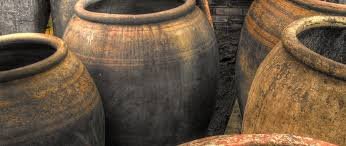 Water for ritual purification was held in stone jars
Water for ritual purification was held in stone jars
Third Miracle, Third Day Resurrection
We now have a pot of jumbled up jigsaw pieces with one or two fitting together. Let us keep filling that pot or we shall end up with only half the puzzle. Once two pieces have been fitted together, it becomes progressively easier to fit all the rest, as any jigsaw-puzzler will tell you. This is how progressive revelation happens too. This is how we learn through prayerful study and contemplation. It's also how detective work is done. You begin with a single fact or truth and more truth or facts accrete round the first one. This miracle took place on the "third day" of Yah'shua's (Jesus') public ministry, a symbolism you will, I hope, not ignore, since Christ rose on the Third Day after His death by crucifixion. A quick flashback to the beginning of John's Gospel will help, to chapter 1, verse 29:
"Behold, the Lamb of Elohim (God) who taketh away the sin of the world" (Jn.1:29, NASB).
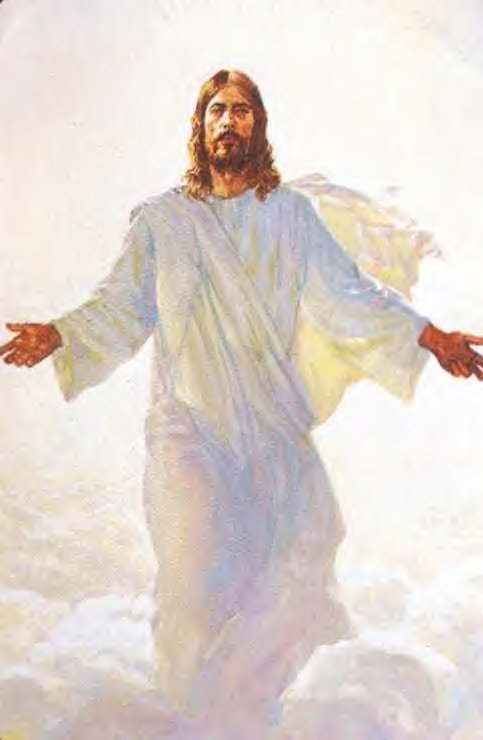
Water to Wine, Old Covenant Torah to New Covenant Torah
Now let's take a quick look forward and you will remember that Yah'shua (Jesus) arose from the dead on the "third day". The marriage at Cana and the resurrection draw closer together with all the same ingredients - wine (blood of atonement), a miraculous transformation of water to wine (resurrection transformation of the mortal to the immortal), the transformation of the Mosaic Torah (Law) (stone jars of water) to the New Covenant Torah (Law) of Messiah (jars of wine).
Orthodox Christians Have Not Understood
With everything pointing to Yah'shua (Jesus), why is it that in the claimed 'Petrine' (Peter) tradition of the Catholic, Protestant and Eastern Orthodox churches [3] it is assumed that the wedding at Cana had nothing directly to do with Yah'shua (Jesus) save, perhaps, as a near relative? The signs point to the eschatological [4] Wedding Feast of the Lamb made possible by the resurrection and yet we are told that the wedding at Cana has nothing directly to do with Yah'shua (Jesus) at all. His presence, they say, is simply coincidental but He uses it to make some symbolic prophetic pointers.
From Whom Did John Get the Story of the Marriage at Cana?
It continues to remain a mystery why the Synoptic Gospel writers make no mention of the wedding at Cana especially since "His talmidim (disciples) had been invited to the wedding" (Jn.2:2, NRSV). Who exactly they were we don't know. But by this time we know that Simon Peter, Andrew, Philip and Nathanael were already followers (Jn.1:35ff.) and even if none of these actually wrote a Gospel they were in close contact with those who did. So the claim by some that not one of the apostles witnessed this wedding does not hold water, nor that it was a private affair attended by only a few people (as once I believed). Cana was a neighbouring village to Nazareth (they were about 7 miles from each other) so there must have been close ties between the two. For John to have been able to write in such detail, especially gaining access 'behind the scenes', would have required the acquaintance of Mary the mother of Yah'shua (Jesus). And since John was the official custodian of Yah'shua's (Jesus') mother, appointed such while Messiah hung on the cross (Jn.19:27), then the source of the material becomes clearer. Mary lived in John's household in Ephesus where she is believed by many to have died, though there is a second tradition too we'll speak of later. John could have obtained a complete account of what happened in that wedding from Mary.
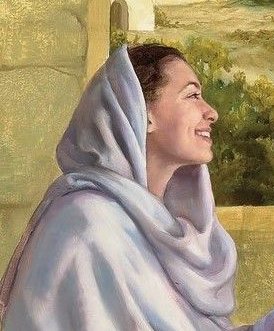 Mary, the mother of Yah'shua, was likely John's source
Mary, the mother of Yah'shua, was likely John's source
Compared with the Synoptists
Our memory of events can sometimes be lacking especially if suffient time has passed and we have been busy as the talmidim (disciples) with such crammed ministerial itinery during the three intense years with Christ. The Gospel of John was written as late as 100 A.D., long after the Synoptists (Matthew, Mark & Luke) had written theirs. There were clearly things he knew that were held back - and what he did share in his Gospel was, like the best wine, held back until last too (cp. Jn.2:10). I myself have similar precious things that I have never shared because they are reserved for later, some of which I am starting to share now in my latter days. John himself figures as the fourth Evangelist too - chronologically the last, but it is the best - the others, important though they are, are as water by comparison, a diluted, simpler form of the Davar Chayim (Word of Life) for the masses, prepared for audiences only able, or willing, to receive so much. Many of Christ's early followers melted away when greater demands were placed on their discipleship.
Nathanael and the Gift of the Father
Like Sherlock Holmes carefully examining clues with his magnifying glass, we must now back-peddal to the 'sandwich' material from John 1:18-51 where we find reference to a certain "Nathanael", the sceptical yet scrupulously honest Israelite with "no guile", deceit or falsehood in him (Jn.1:47, KJV), who confessed the Messiahship of Yah'shua (Jesus) (vv.45-51). Do you remember him? Why has John chosen to mention this man? Why is he there at that point in John's recounting of his Gospel? The Synoptists are silent about him. Why? Because there were probably thousands of such incidences with a variety of people and Nathanael simply wasn't needed for their illustrative purposes. As a preacher I face the problem of choosing between thousands of potential examples to illustrate points. But it is not hard to understand why John has included him in this story. Why? Because the name "Nathanael" literally means "gift of El (God)" and John is talking about Yahweh's supernatural gifts to mankind, specifically, the gift of Himself as an incarnated human being. What an amazing gift! To be able to talk to Elohim (God) face-to-face. To be able to know what the Heavenly Father is like:
"Philip (the apostle) said, 'Master, show us the Father and that will be enough for us.' Yah'shua (Jesus) answered: 'Don't you know Me, Philip, even after I have been among you such a long time? Anyone who has seen Me has seen the Father. How can you say, 'Show us the Father'? Don't you believe that I am in the Father, and that the Father is in Me?'" (John 14:8-10, NIV).
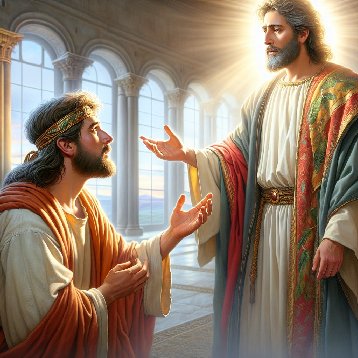 Honest Nathanael, the 'gift of Elohim', who
Honest Nathanael, the 'gift of Elohim', who
confessed Yah'shua was Israel's Messiah
A Family Affair
Furthermore, Cana was Nathanael's home village so he is the obvious candidate for John's illustrative purposes. He is almost certainly at the wedding if for no other reason than the whole of the village of Cana, plus others from neighbouring villages, must have been there. This was an intimate, extended family affair. And those of you will know who come from, or have lived in, villages there is usually extensive inter-marrying of villagers from the same rural location. And as Nazareth was but 7 miles away, it could also explain why Mary was there as some sort of relative, and why an invitation had been extended to Yah'shua's (Jesus') talmidim (disciples). True, it's an assumption based on a set of assumptions but it's pretty reasonable. I think Sherlock Holmes would have nodded in agreement.
Pointer to the Resurrection
But Cana was also the site of a second miracle a little later when Yah'shua (Jesus) raised a nobleman's son from the dead (Jn.4:46-54). John calls this thaumaturgy [4] a "second sign" (v.54), a raising-from-the-dead sign hearkening back to the Cana miracle which was pointing to such things. By this time and in this place Yah'shua's (Jesus') reputation as a miracle-worker is well and truly established. Is this not confirmation that we are to see in the "first sign" a pointing-forward to the resurrection of Christ and of all mankind? For the Nobleman respresents, on one level, our Heavenly Father, Yahweh, who raises His Son Yah'shua (Jesus) from the dead. But what of the word "Cana" itself?
The 'Companion'
Our English spelling 'Cana' is Greek. The ruins of this place are found in a village today called Kafr Kanna even though there is a rival archaelogical site which in Arabic is called Kana-el-jelil. Could there be a relationship between "Cana" and the Hebrew kenath meaning a "companion"? If so, who or what is this "companion"? And are there any other clues to indicate that a "companion" has anything to do with this miracle? And what might a "gift of El (God)" (Nathanael) have to do with it? For John nothing is coincidental. If someone or something is 'there' in a narrative that is essentially prophetic overall, then the details are undoubtedly prophetic too, and John is good at assembling them and crafting a prophetic mosaic out of them. Is it any wonder Yahweh used him to write the Book of Revelation which has more symbols packed into it than any other book in the Bible? It's so dense it took us 2½ years to unpack it and even then we weren't really finished.
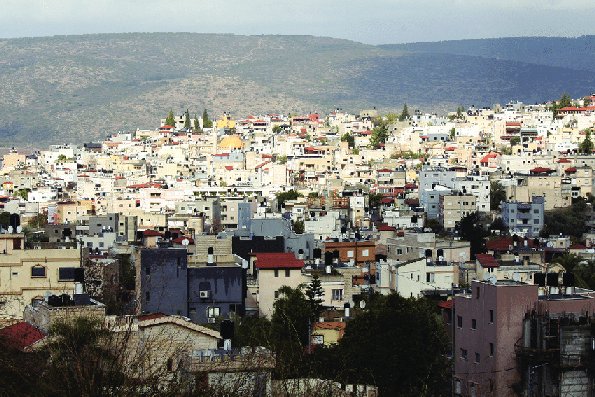 Modern day Cana (Kafr-kanna) in the Israeli Republic
Modern day Cana (Kafr-kanna) in the Israeli Republic
Marriage, Wine and Blood
On the obvious level, marriage is not only a gift of Elohim (God) to mankind beginning with Adam but has to do with companionship. We need companionship. We don't do well alone. And even though Adam walked and conversed with Elohim (God) in the garden, he still needed a companion after his own kind. Alone we tend to lose a sound persepective on reality. We were created for companionship. Do a New Testament word search on 'companion', 'companions' and 'companionship' and you'll find at least 20 references. On the level of the Messianic Community (Church) or Body, this too is about a "companionship" of believers who are allegorically married to Messiah in a plural, communal or polygamous relationship. We, who are the saved and become His friends through consistent obedience, are the companions of Messiah by His blood purchase of us at Calvary that is symbolically represented by wine. However, of what are we the allegory? Of what are we the type? What is the literal marriage? An anonymous wedding at a little village called Cana? Or something more intimately connected to Christ and us to which the marriage at Cana is pointing?
Deacons, Shammashim, the Head Servant & Wine-Taster
First, some more data is needed as it's too soon to draw further conclusions. The Greek word for "waiters" or "servants" in John 2:5,9 is diakonoi which literally translates to "Deacons" in English. It is the Deacons (Shammashim in Hebrew) who traditionally distribute the Master's (Lord's) Supper after it has been consecrated by the Eldership. The Deacons are under the authority of a Head Deacon paralleled by the Head Servant or Waiter in the Cana account whose responsibility is to taste the wine before its serving to the guests to make sure it is good. The Deaconate is a servant ministry. Yah'shua (Jesus) came as a servant to us and may rightly be described as the Chief, Head or Arch-Deacon. As servants mature, they become the friends of their Masters. And as friends mature they become, allegorically-speaking, marriage companions, which is the ultimate form of intimacy. More puzzle pieces have been added to the pot and some are fitting together nicely.
Supernaturally-Made Wine and Master's Suppers
And now a vital key. Notice that there are TWO TYPES OF WINE in this story, not one. There is natural or ordinary wine (which runs out) and there is supernatural wine (which doesn't) and the 'best' wine is kept until last, until the very end of the week of celebrations. This is hinting at there being two Master's Suppers - one which is natural and symbolic, which the Protestant branch of the Messianic Community (Church) has been using since the Reformation of the 16th century, and the other a last days Master's Supper in which the wine is created supernaturally from water, as it were. For those of you familiar with Messianic Evangelical teaching on this end-time Master's Supper which turns the blood of the person who drinks it into the blood of Messiah and the Father and which confers immunity to disease, the administration of it is by the same method - or some method like it - as in Cana. He who has authority blesses water and it is turned supernaturally into wine. This was the Master's Supper administered by John at Ephesus. Again, I will have much more to say about this at a later time when it is needed, as I wish only to prepare you mentally for what is to come lest you be taken by surprise and overtaken by either unbelief or are tempted to invent fables as the Catholics have done in claiming their priests are able to blasphemously change wine into the literal blood of Christ like a conjurer even though this can be neither seen nor tasted and therefore never verified.
Transsubstantiation or Consubstantiation?
I wish to state for the record that I am not advocating the Catholic Transsubstantiation doctrine, nor ever will. We have always held to the Lutheran Consubstantiation teaching for the symbolic Master's Supper. For those who don't know what this is, it is the belief that the substance of the bread and wine coexists with the body and blood of Christ in the Eucharist. We have talked a little about this in recent times, back in 2019, when I spoke at length about the illusive Agapé Meal or 'Love Feast' as the Sukkot Meal-to-come, which anticipates the Marriage Supper of the Lamb. If you want to research this more fully, you can read the whole series called Ancient Connections when I first introduced you to the Eastern Orthodox concept of the Phronema. That's all we have time to talk on this subject matter today as there are more puzzle pieces yet we need to uncover but I at least wanted to remind you of it so that you can privately follow up on this if you wish.
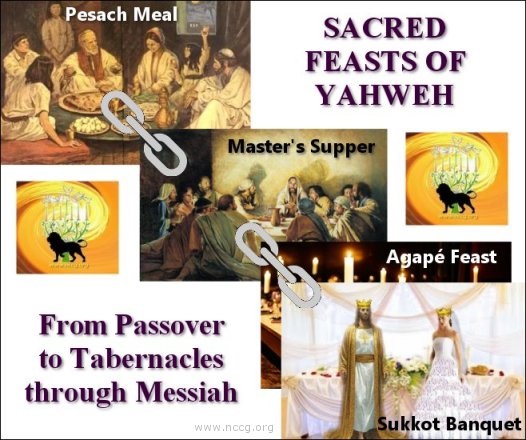
The Stone Jars, Peter and Servanthood
As I said earlier, the water in the six stone jars was used traditionally for ritual washing - the washing of the feet of dusty travellers, and of hands before meals - and for other ritual purposes. Note that six is the number of imperfection in scripture - ritual washing - and that includes water baptism - which cannot cleanse your soul and can only ever be a symbolic representation of what the Ruach haQodesh (Holy Spirit) does invisibly and supernaturally (cp. Heb.7:19) yet it produces outward signs in terms of changed behaviour and character. Why "stone" jars? Why has John gone to the trouble to point out what they were made of? Think back on the new name Yah'shua (Jesus) gave to Simon at Caeraera Philippi, renaming him 'Kefa' or 'Cepha' in Aramaic (which means 'a firm foundation' - in some Bible versions the Latin, 'Cephus' is used). As we saw last week and at the beginning of today's message, the Greek Petros (from which we get the English 'Peter'), means a 'detatched stone' or 'pebble'. Remember this isn't just the name of the first presiding Apostle or Patriarch but simultaneously and prophetically describes a foundational principle of salvation so that we may know who the true believers are and who the nominal or fake ones are. In a sense we too who are born again and have obtained a witness directly from the Father that Yah'shua (Jesus) is the Messiah are 'peters' or 'pebbles' and it is that upon which we build our Christian life. The Johannine connection thus becomes much clearer, for the 6 water-filled stone jars are the vessels or containers in which the miraculous transformation from water to wine takes place in which Yah'shua the Messiah (Jesus Christ) is seen to be both Elohim (God) and the human Head Deacon or Chief Servant! For as Mark wrote:
"For even the Son of Man did not come to be served, but to serve, and to give His life as a ransom (atonement) for many" (Mk.10:45, NIV).
A Cascade of Prophetic Symbols
There is a cascade of prophetic symbols forming up and combining together here, a kind of prophetic writing for which John is famous. We could spent several days unpacking this further but again we don't have time today. I merely wish to prep you, to give you something to chew on and explore yourself.
A Lot of Processing to Be Done
I think I have given you enough to chew on for one day - it gets much more meaty and deeper still but that, I think, should wait until next week or you will suffer from information overload and not be able to process anything more. As it is, I recommend you go over this material several times, make notes, and pick out parts to meditate on and pray over, listening carefully to what Yahweh tells you. In any case you need to do your own research and check up my references, to be convinced that I am speaking truly and to give yourself this opportunity to let everything sink in otherwise next week's material will be harder to fathom. Preparing the Remnant for gathering takes a lot of time because we are slow learners, we tend only to be able to process small chunks of information at a time. We also have many prejudices to ovecome and many lies taught by the churches to be dethroned. It takes courage to follow through with the truth because those who seek and embrace truth are most definitely persecuted. So be wise with what you do, and don't, share. The flesh always wants to take the course of least resistance - to take short cuts. Resist the temptation to be lazy. But this is too big and intricate for that. This really is only for those who have a good foundation in Christ because you need that to be able to properly process everything and not go and misunderstand and - Yah forbid - misrepresent it. This is why I have not brought all of this into the public gaze until now and in a concentrated form.
Conclusion
I hope in sharing this with you today that you will give all the glory to Yah'shua (Jesus) and come to appreciate Him and what he has done for us more and more. So until next week, when we look at the third part of Part 2, may the grace of our Master Yah'shua the Messiah (Jesus Christ) go with you and Yahweh bless you. Amen.
Continued in Part 3
Endnotes
[1] I have not attached Hebrews to the Pauline corpus even though I believe him to have been the author of that epistle as there is not a consensus. Others believe a disciple of Paul wrote this letter so I feel justified in putting this in the 11th position for now
[2] C.K.Barrett, The Gospel According to St.John: An Introduction with Commentary and Notes on the Greek (SPCK, London: 1956), p.156
[3] Remember the special status that the Roman Church assigns to Peter to jusify its claim to legal authority as the 'true Church'. As a result the Johannine tradition gets further marginalised and de-emphasised.
[4] Concerning the doctrine of death, judgment, heaven and hell
[5] A wonder or miracle ordinarily not possible by natural human means

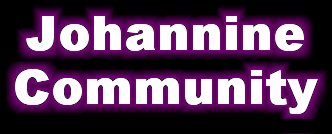

 V465
V465

This page was created on 6 April 2000
Last updated on 2 May 2024
Copyright © 1987-2024 NCAY - All Rights Reserved




